Here's the clamp closed and engaged.

Here's some vague terminology:
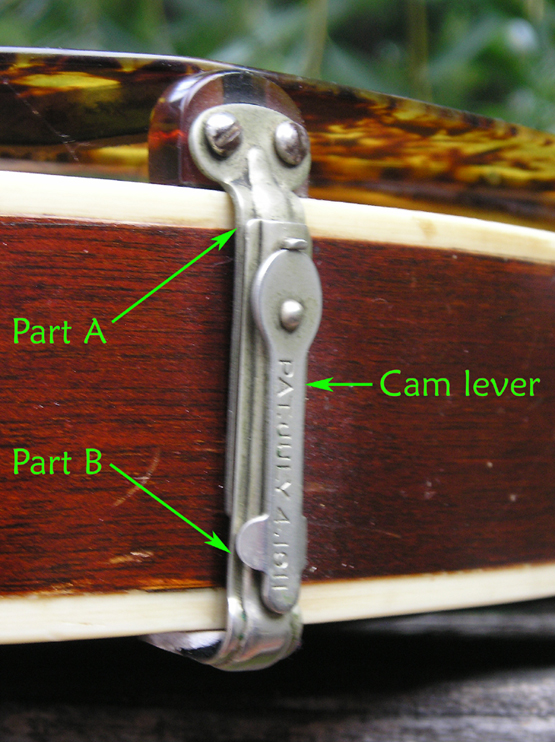
Basically, the cam lever, when engaged, forces Part A and Part B to move relative to one another.
It does this because the cam is riveted to a brass strip inside the mechanism that acts as a catchment with a hook in it that engages one of several little openings in Part A:
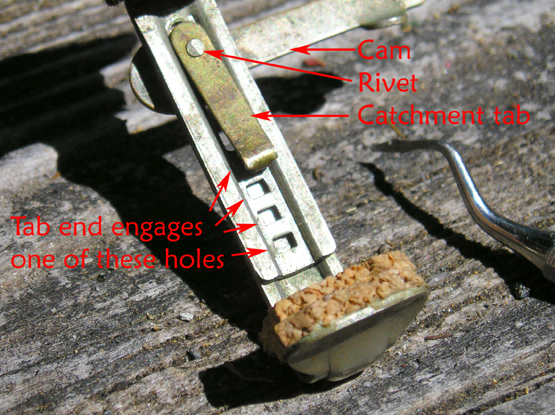
So when the catchment strip is engaged, and the cam is turned to the fullest (where it locks, red arrows below), the two main sliding parts A & B are pulled against one another (blue arrows), shortening the distance between the pads that clamp the body edges.
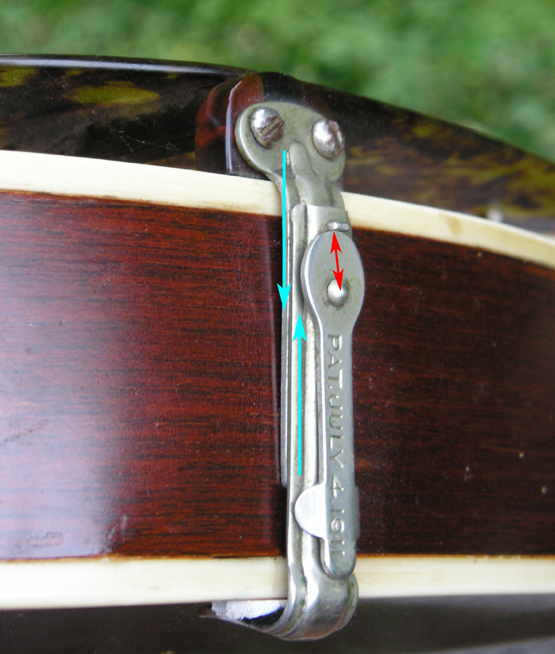
The point of these little holes is that each covers a range, dictating a different distance of the throw of the mechanism. This effectively covers mandolins and mandolas. You can fine-tune that throw with the thickness of the pads on either end. Ideally, you want the minimum amount of pad needed to protect the instrument and allow firm clamping. Thicker pads are trouble, they never hold very well.
You can adjust the hole you're using with a dental pick like this:
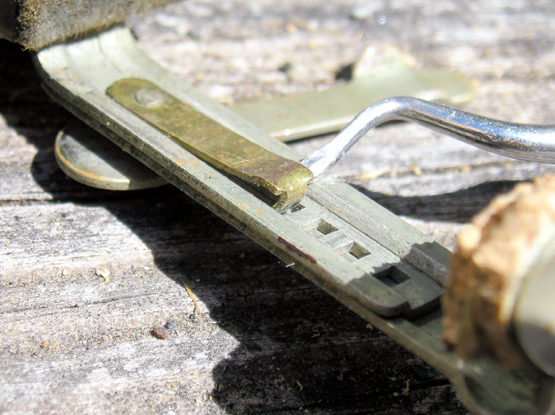
You carefully lift the hook out of the hole and slide that whole part of the assembly - cam and all - to the next hole down, and try it. Cut away any unnecessary cork before doing this. Just leave enough to protect the instrument. I prefer tanned leather to cork or felt.
Another view:
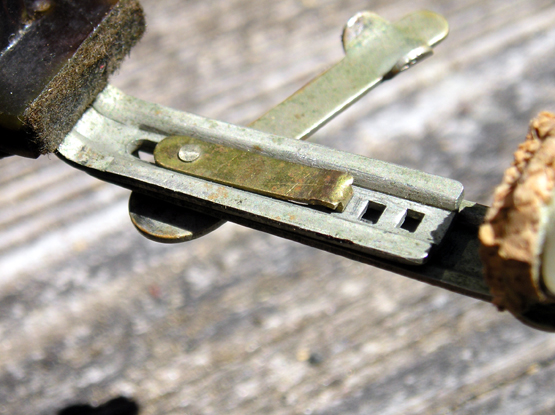
As long as the hook engages a hole well, the cam action will be effective. Sometimes this hook breaks off, in which case you have to make a new hook. This is tricky, since removing the tab with that hook isn't practical. It takes jewelers files and some deft clamping to accomplish the reshaping in place, then another good trick in bending the new hook, but the shorter tab just means you use a different hole, and the repair is usually good for at least another 80-100 years.
OK, here's a bonus tip:
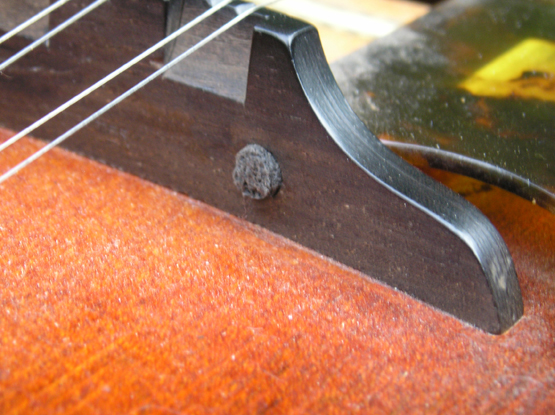
If your pickguard is the type that has a little brad that's supposed to rest in a hole in the bridge, you can eliminate rattling by carefully cutting a little plug out of synthetic wine cork (I chose a black one here), which you stuff into the hole and then stuff the little brad into the center of the plug. This material is extremely resilient and long-lived, far superior to rubber or cork or leather.